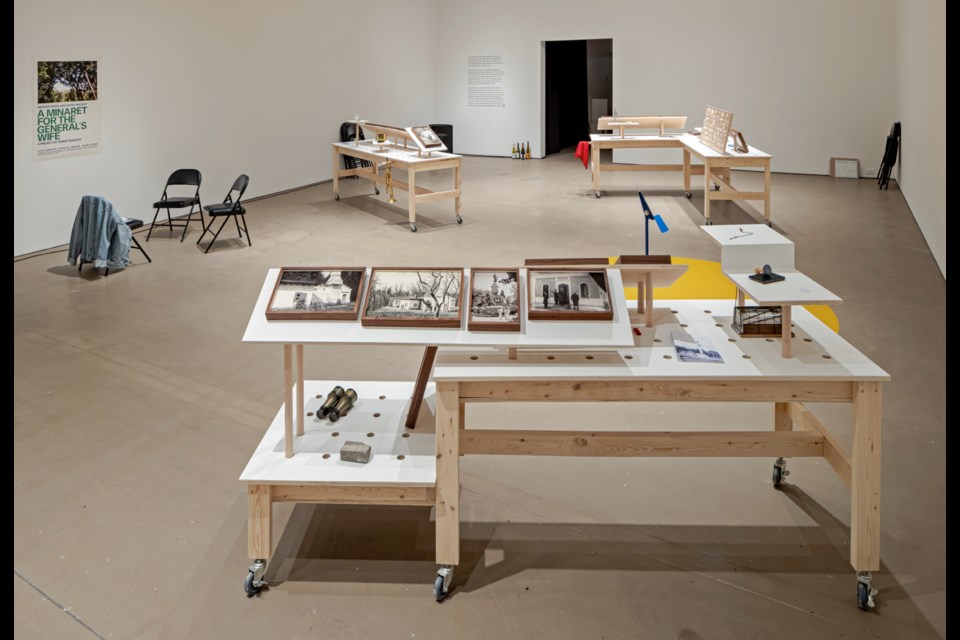Richmond Art Gallery’s latest exhibition is challenging visitors to create their own stories with the fragments provided to understand how narratives are created.
Turkish-Canadian artist Erdem Taşdelen uses the unclear origin of an “unusual,” free-standing minaret (a tall slender tower) in Kėdainiai, Lithuania as the core of his exhibition titled “A Minaret for the General’s Wife.”
This exhibition, said Taşdelen, is a hybrid of visual arts and literature that challenges people to “create their own story” about where the tower came from.
A minaret, he explained, is usually attached to a building and not seen on its own – this one being an exception – and it is still quite the mystery.
Taşdelen told the Richmond News that he came across “two prominent narratives” related to the minaret’s construction.
One, that the structure was built as a monument to celebrate Russia’s victory in the Russo-Turkish War of 1877-1878; the second, that it was the last remaining part of a mosque that Tolteben, a general in Lithuania, built as a gift to his Turkish wife of Islamic faith.
Despite the second myth being the most popular among locals, no historical records show a Turkish wife of Islamic faith, according to Taşdelen.
Exhibition visitors will find archived photographs, miscellaneous artifacts, audio of a Turkish prayer and a video shot on-site of the orphaned minaret.
“I really want for the audience to take away this feeling of empowerment and for them to come to their own narratives with these fragments,” said Taşdelen, adding that he wanted to use the minaret as “a metaphor for many different kinds of experiences” people have.
“I don’t necessarily want to tell a full story in the way that a novel or a narrative film might. Rather, I just want to give people the building blocks with which they can build stories by themselves.
“I’m not interested in one singular truth, I’m interested in what everybody brings to the table collectively.”
He described the entire installation “like a rehearsal or workshop space” where imaginary people can turn these fragmented narratives into a production.
“I want to give people the sense of togetherness,” said Taşdelen.
“The exhibition gestures towards the provisional, the unfinished, the incomplete — so that the viewer can be involved in the meaning-making. A Minaret for the General’s Wife asks the audience to consider how the stories of the objects in their own lives are created.”
Taşdelen is hoping visitors “keep an open mind” about the installation
The exhibition runs now until July 31.


.png;w=120;h=80;mode=crop)
